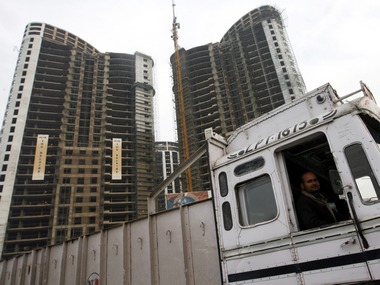New Delhi: Even as there has been a steady rise in the premium housing segment across the country, the affordable housing segment – which saw a crest in 2010-11 – has begun to see a slip in supply, despite demand for it being high.
Developers in the segment, say, part of the reason for the skewed demand supply of such housing is because of bad policies that are beneficial only to those developing large, big ticket projects.
“Affordable housing is an area that not many developers delve into for various reasons. For one, land may be an expensive proposition. Also, in low cost housing, the margins need to be kept low. For those who are used to operating on huge margins, this is already a deterrent,” Vivek Singh, Regional Business head (NCR region) at Value & Budget Housing Corporation (VBHC), a Bangalore based affordable housing developer.
“Besides that, many government policies are also responsible for keeping developers of affordable housing at bay. The sad truth is, that the policies only favour developers who develop big ticket projects,” he said.
THE NUMBERS
Even as the number of affordable housing projects launched across the country saw a jump in the year 2010-11 - when there were 407 such projects in the below Rs. 20 lakh and 135 projects in the below Rs. 15 lakh segment - the following years saw a dip, according to data from PropEquity, a real estate research and intelligence firm.
[caption id=“attachment_604690” align=“alignleft” width=“380”]
 Are the laws in favour of the big developers? Reuters[/caption]
Are the laws in favour of the big developers? Reuters[/caption]
In 2011-12, the sub-Rs. 20 lakh projects were down to 279 and the sub-Rs. 15 lakh projects were down to 95 projects. For 2012-13, as of the first financial year quarter, the number of projects launched in the below Rs. 20 lakh and below Rs. 15 lakh categories, stood at 50 and 17 respectively.
According to a recent government report, India faces a housing shortage of 18.78 million units for the next five year plan from 2012 to 2017, most of which is in the EWS (economically weaker sections) and LIG (Low Income Group) categories. Ironically, as many as 11 million houses (or more than 50 percent of housing shortage) - which accounts for around 10 percent of the country’s housing stock - lies vacant, according to India’s Census of 2011.
WHY AFFORDABLE HOUSING IS NOT VIABLE IN METROS
While the shortage spans across major markets in the country, VBHC, which recently launched an affordable housing project in Bhiwadi, Rajasthan, says that even while developers like themselves would like to have projects within the cities, the shortage and high price of land leave them with no option but to explore smaller towns and areas that lie on the fringe of metros.
There are almost no incentives for developers to develop housing which is affordable in the real sense. And, prices of properties in Tier 1 cities are almost always out of the reach of normal people.
“Land dynamics are very different in say Gurgaon, where land prices are very high. If you procure land at high costs, you cannot launch a project at low cost. Land costs are very high so it doesn’t make sense to make affordable housing. Developers go for premium housing projects because margins are high - they can be anywhere from 60 to 110 percent - and they cover the land costs,” Samir Jasuja, Founder & CEO, PropEquity said.
LAWS FAVOUR BIG DEVELOPERS
More so, bye-laws which have a bias towards bigger developers act as a deterrent.
“There are a lot of constraints a developer like VBHC faces. We typically do small projects on 3-4 acre parcels of land because if we have to keep the housing affordable, we have to make sure we build on time and as efficiently as possible. That is possible only in smaller project as permissions and other mandatory clearances for such projects will be fewer. However, the bye-laws and the entire mechanism of getting approvals in many states is aligned for premium developers,” Singh told Firstpost.
VBHC typically caters to a segment of customers whose monthly income is Rs. 25,000-30,000 per month, making 650 square feet 1BHK and around 800 square feet 2BHK flats - and target to finish construction in 2 years. The basic pricing at its recently launched Bhiwadi project is between 2200-2300/sq feet.
Citing an example, Singh said that despite having an office in Delhi, VBHC is unlikely to have a project in Haryana.
“Land prices in Haryana are exorbitant, external and internal charges are also very high at about Rs. 2-3 crore per acre and other statutory requirements are tilted towards large developers. Haryana has this policy where group housing has to be built on a minimum of 25 acres of land.”
“There are also density norms (where the master plan stipulates that only 30 persons can stay per 2.47 acres in a particular area) - with all these norms one can only make 50-60 apartments per acre,” he explains, adding, “As a developer that builds apartments which are say 1BHK and 650 square feet super built up, and where our price point is capped at about Rs. 20 lakhs for a 2BHK, this is not feasible.”
)